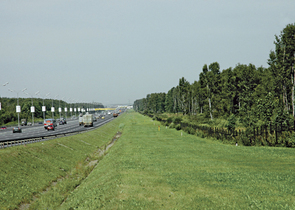Nature Conservation 6/2012 — 17. 3. 2013 — International Nature Conservation — Print article in pdf
Gutzerová N.: The Losiny Ostrov – A National Park within the Sight of the Kremlin

In Russia, National Parks (NPs) began to be established not before in the 1980s. The Losiny Ostrov (literally the Moose Island) situated on the Moscow’s north-eastern outskirt is the second oldest NP in the Russian Federation.
It was declared on the land which since ancient time served as the hunting area of Russian tsars and is located only eight kilometres from the Kremlin. The most of the NP is covered by forests; the Alekseevkaya Roshcza Forest, a 250-year-old pine growth in southern part, is particularly valuable. On the NP’s north-western edge, there are extensive Upper Yauza River Wetlands, while south of the village of Centralny, remarkable peat-bogs have been preserved. The NP’s Administration runs some visitor centres which present also region’s history as well as some national cultural traditions. Contrary to European NPs, they do not serve for individual visitors and the visit has to be agreed in advance. The Ptichy Sad (Bird Kindergarten), where injured animals are treated, and the Moose Biological Station are the most visited among them: at the latter, moose, in Europe called elks (Alces alces) are kept. At present, the NP is inhabited by approx. 40 moose and the individuals which have to be captured on the Moscow’s territory are transferred to the NP. The Losiny Ostrov NP has been under strong human pressure, particularly by tourism or by developing the Moscow’s building-up area which has reached its boundaries. Nevertheless, the most serious threat to the NP is building another Moscow Ring Road, a multi-lane dual carriageway which shall fully isolate the NP and shall inhibit wild animal dispersal and migration.

